Did you know that the colors you use in your home can have a direct impact on your emotions? Color psychology suggests that color has the power to influence productivity, energy levels, mood, and self-esteem. It’s not just about aesthetics; it's about optimizing each space based on the feelings and emotions each color invokes.
Red: Passion, Excitement, and Ambition
As one of the most powerful shades in color psychology, red entices a wide range of emotions. It triggers energy, making it an ideal option for creative spaces like home offices and studios. Red is also known to increase appetite, making it a great choice for kitchen and dining areas. However, it's best to avoid using red in areas where you want to relax, such as bedrooms, bathrooms, and living areas. This powerhouse color will undoubtedly make a statement wherever you use it.
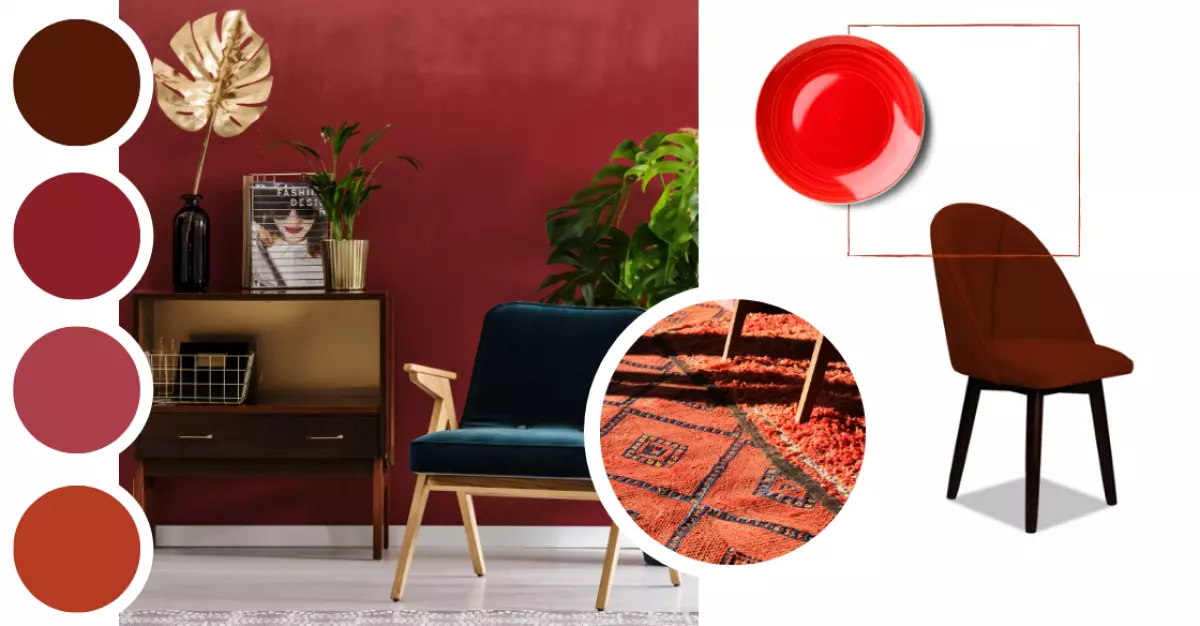 Red color psychology
Red color psychology
Orange: Fun, Energy, and Creativity
Orange is known to invoke fun and energetic enthusiasm. Its bright and punchy vibrance increases energy levels and boosts creativity. Studies show that orange can stimulate physical effects such as a heightened sense of activity, increased socialization, increased oxygen supply to the brain, and increased feelings of joy. Orange is a great choice for home gyms or any other areas where you want a boost of energy and confidence. Softer shades like peach or apricot can make the color more manageable and less overwhelming.
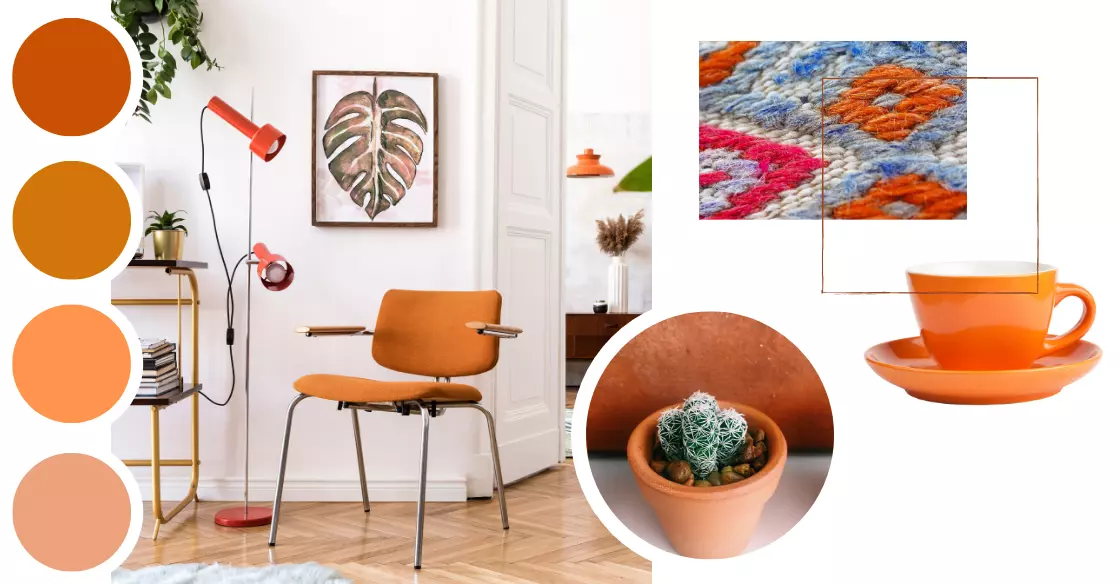 Orange color psychology
Orange color psychology
Yellow: Happiness and Optimism
Sunshiney yellow is related to happiness and optimism. It's a vibrant and joyful color that can increase energy levels, making it ideal for high-traffic areas like the kitchen or living room. However, too much yellow can be overpowering. We recommend using it in small doses and as accent pieces. Golden and mustard shades have become popular in recent years, adding a touch of chicness and playfulness to any space.
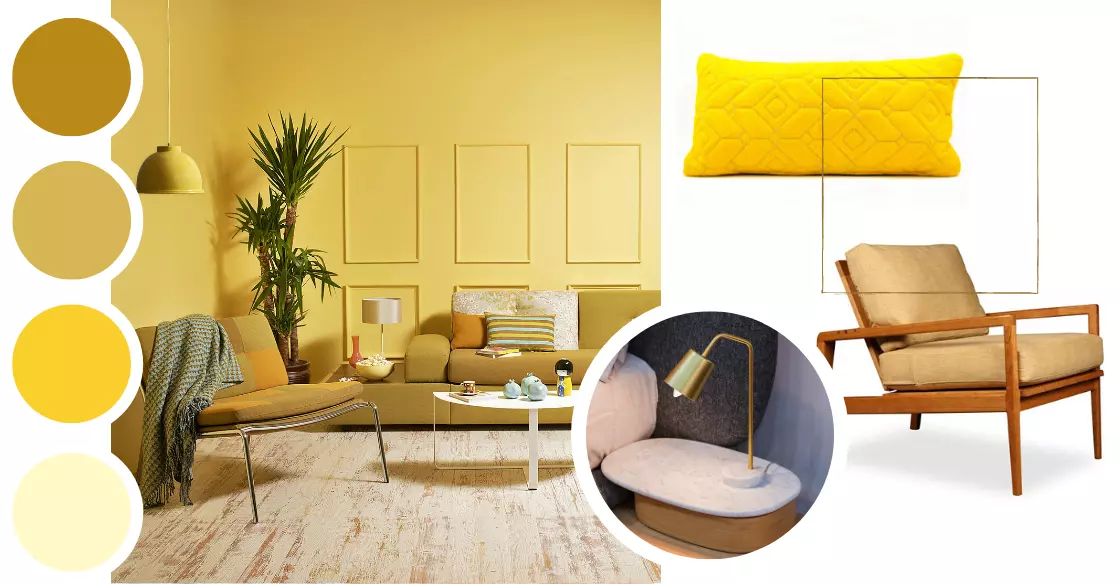 Yellow color psychology
Yellow color psychology
Green: Balance, Growth, and Restoration
Green stimulates feelings of balance, growth, and restoration. All shades of green create an atmosphere of serenity and balance, but different hues create different moods and feelings. Deep shades like emerald or forest green add intensity and elegance, making them great for master bedrooms, dens, and home offices. Lighter hues like sage, mint, and jade are more tranquil and can boost focus. You can play with layering different shades of green to create dimension and depth in your space.
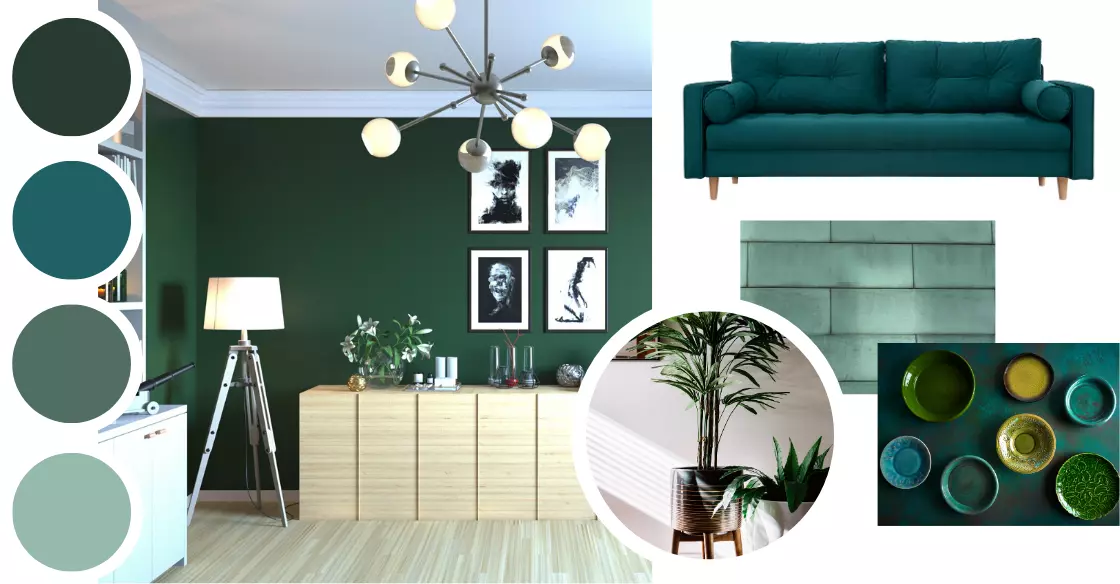 Green color psychology
Green color psychology
Blue: Tranquility and Neutrality
The calming effects of the color blue are associated with feelings of tranquility and neutrality. Blue is extensively studied in color psychology due to its impact on emotion and mental well-being. It also provokes feelings of community and connectedness, which is why it's used prominently in social media platforms and marketing efforts. Blue can be used anywhere you need a touch of relaxation, from bathrooms and bedrooms to communal living areas. Different shades of blue create different vibes, with deeper hues adding a more masculine feeling and lighter hues conveying femininity.
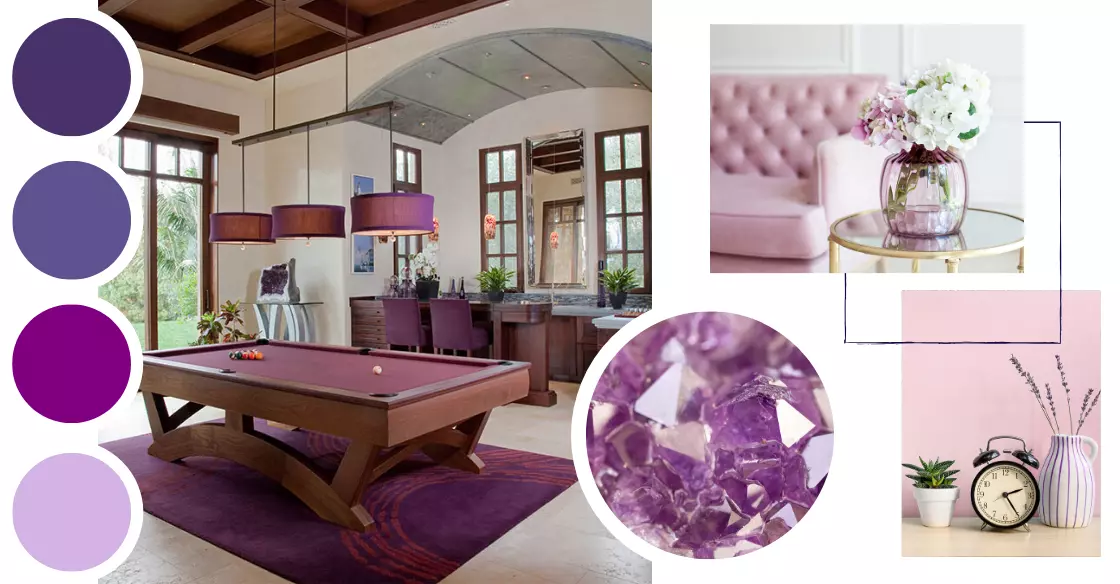 Blue color psychology
Blue color psychology
Purple: Creativity, Depth, and Inspiration
Purple is a regal and powerful color that gives rise to an array of emotions. It works well in studios, home offices, craft rooms, and artistic spaces. In darker hues, purple can make spaces feel more luxurious and sophisticated. Deep plums and wine shades add sensuality and mystery, ideal for bedrooms, dens, and vanity spaces. Lighter purple hues create softness and playfulness, perfect for children’s rooms, playrooms, and the kitchen.
 Purple color psychology
Purple color psychology
Pink: Love, Nurturing, and Softness
Pink represents love, nurturing, and softness. It has become one of the most popular colors in interior design due to its versatility. Blush, rose, and flamingo tones instantly brighten up a room and add a feminine flair. Deeper shades like magenta and fuchsia can be used as pops of color to enhance maximalist designs. Coral and salmon offer gender-neutral shades of pink. Incorporate unique textures, patterns, and color combinations to elevate your design scheme.
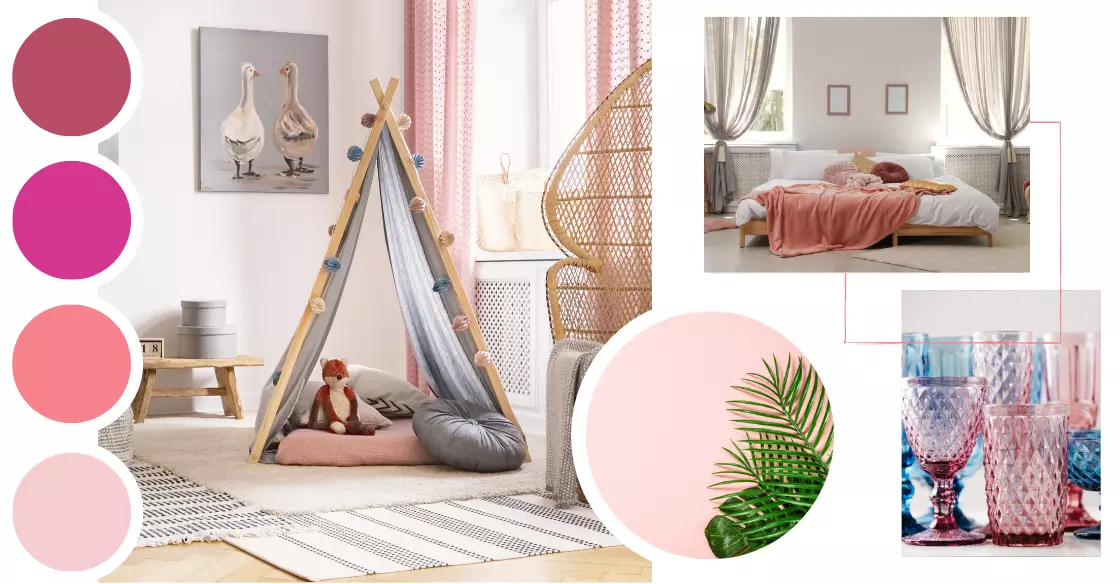 Pink color psychology
Pink color psychology
White: Purity, Cleanliness, and Innocence
White is the most versatile color to use in interior design. It denotes feelings of purity, cleanliness, and innocence. Minimalism has made clean white furniture, walls, and fixtures more popular than ever. While white is refreshing and modern, some may find it too sterile and cold. To avoid this issue, integrate pops of color throughout your home to create dimension and warmth. You can use one pop of color in various shades or choose complementary colors for accent pieces and walls.
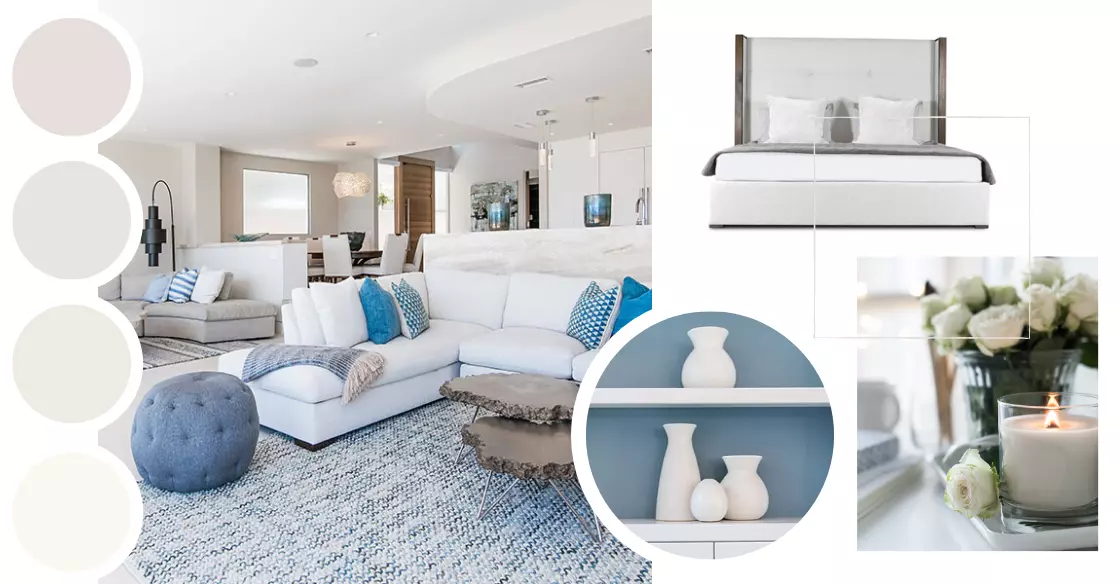 White color psychology
White color psychology
Black: Power, Mystery, and Drama
When in doubt, go with black. Black signifies power, mystery, depth, and drama. It offers stability and sleekness while being versatile enough to work in any space. Black is a great option for furniture, hardware, accents, and even wall colors when executed correctly. Too much black can be overpowering and shrink a space, so use it to draw attention to carefully selected standout pieces. If you want a broody, dramatic space, opt for an area that receives natural light and offset the darkness with lighter accents. Black is a timeless go-to option.
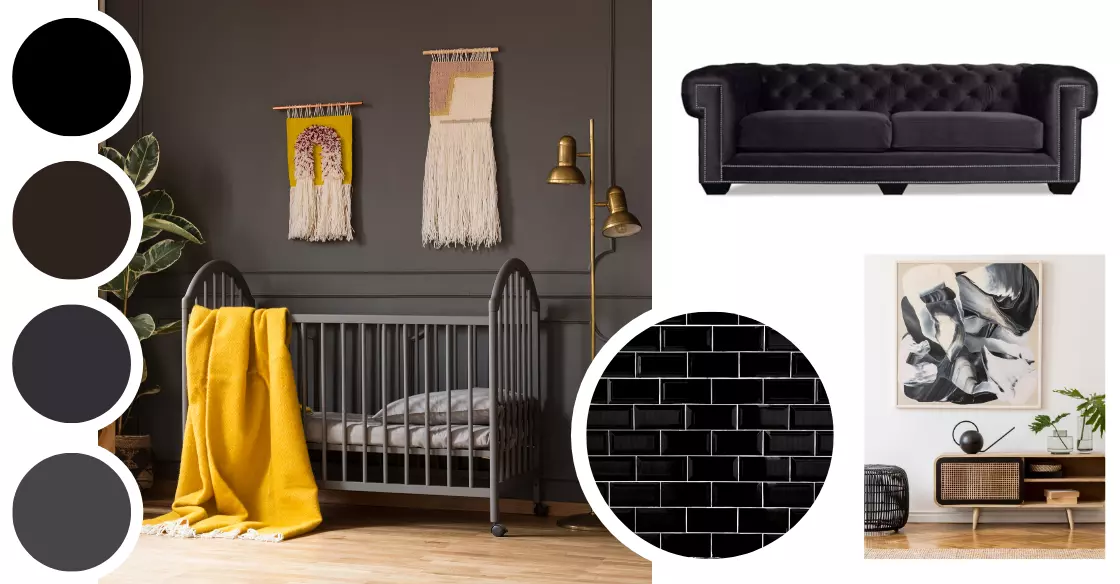 Black color psychology
Black color psychology
How Can Color Psychology Transform Your Home?
Taking the time to consider the effects of color psychology in your interior design efforts will help you create the exact ambience you want in each space. Choose colors that speak to you and make you feel comfortable, while also practicing color psychology to make your home aesthetically pleasing and functional. Explore our online store for more inspiration on cultivating a balanced space or connect one-on-one with our expert designers to effectively use color psychology in your home.









